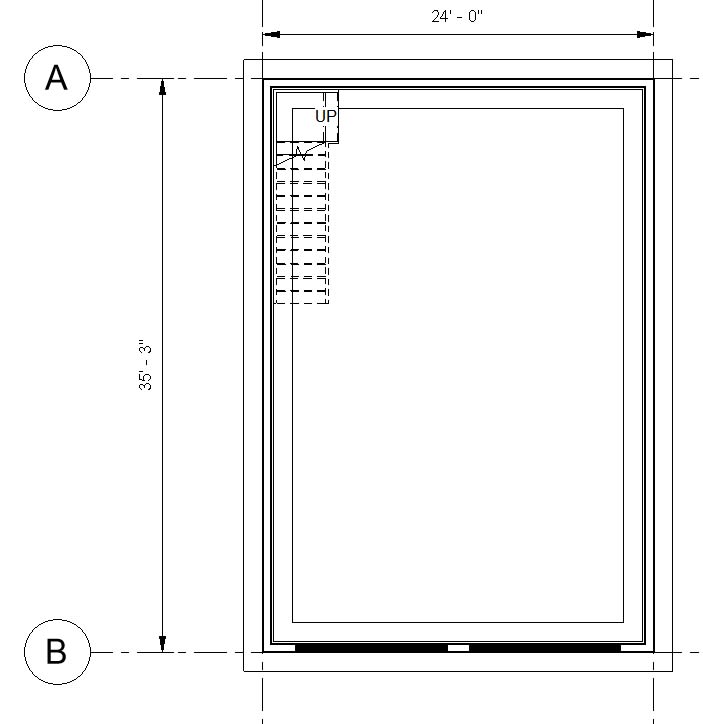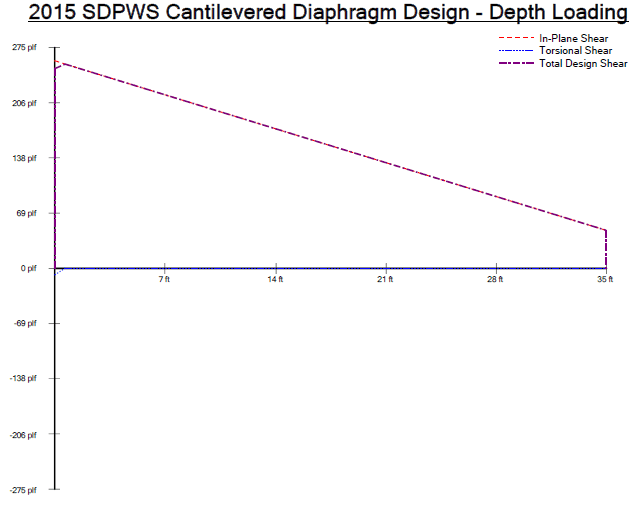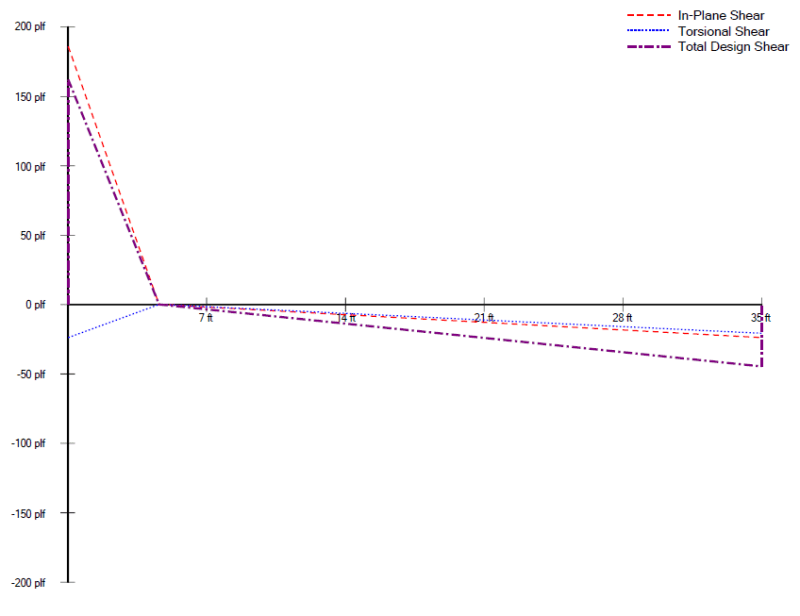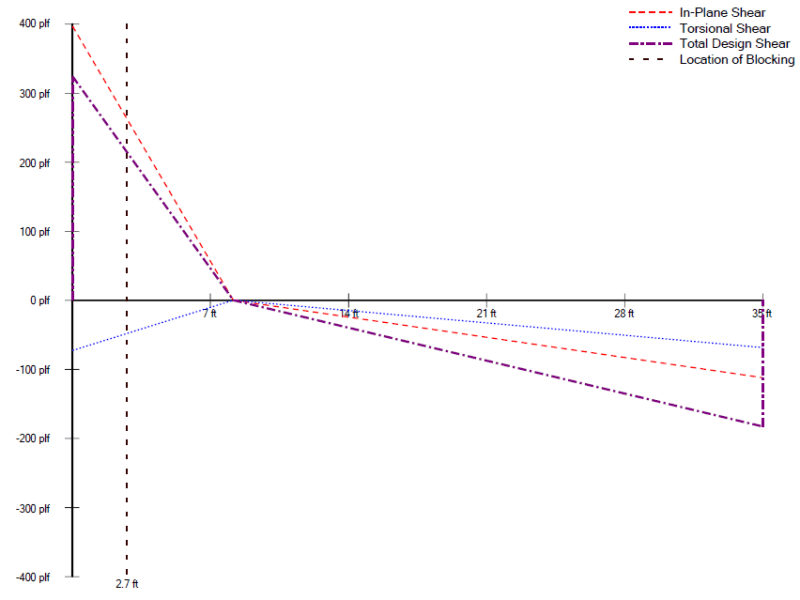HDStructural
Structural
Hello All,
I am working on a two story garage with two garage doors on the front. The second floor has a few windows, but not much else for openings. I can't get the front walls to be IRC compliant at the first floor with either of their portal frame methods. I can get them 85% compliant with PFG and 95% compliant with PFH.
I am thinking that I will design the lateral system assuming a rigid diaphragm, which will put all of the shear in the back wall with some additional torsional shear on the side walls. This may also increase the diaphragm requirements above what IRC requires but I can take care of that. I am thinking that I will still use one of the methods above for the front walls which gives 85% to 95% of the required strength per the IRC for extra redundancy.
The diaphragm can be idealized as rigid per SDPWS section 4.2.5 based on shear wall and diaphragm deflection.
The building is not in a high seismic area, although it would still comply with the SDPWS rigid diaphragm requirements, L:W ratio less than 1.5:1, Length no more than 35' (less than 35' when looking at wall centerline to wall centerline). This gives me more peace of mind.

What are your thoughts on this? Does this seem reasonable?
I am working on a two story garage with two garage doors on the front. The second floor has a few windows, but not much else for openings. I can't get the front walls to be IRC compliant at the first floor with either of their portal frame methods. I can get them 85% compliant with PFG and 95% compliant with PFH.
I am thinking that I will design the lateral system assuming a rigid diaphragm, which will put all of the shear in the back wall with some additional torsional shear on the side walls. This may also increase the diaphragm requirements above what IRC requires but I can take care of that. I am thinking that I will still use one of the methods above for the front walls which gives 85% to 95% of the required strength per the IRC for extra redundancy.
The diaphragm can be idealized as rigid per SDPWS section 4.2.5 based on shear wall and diaphragm deflection.
The building is not in a high seismic area, although it would still comply with the SDPWS rigid diaphragm requirements, L:W ratio less than 1.5:1, Length no more than 35' (less than 35' when looking at wall centerline to wall centerline). This gives me more peace of mind.

What are your thoughts on this? Does this seem reasonable?



